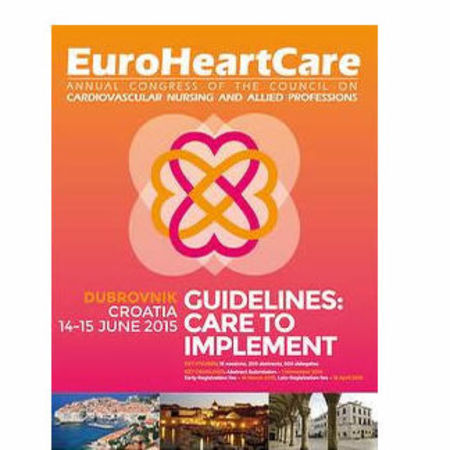According to a new study, patients with newly diagnosed coronary artery disease can be motivated to change their lifestyles when shown images of their own calcified coronary arteries. The study was presented at EuroHeartCare 2015, the official meeting of the Council on Cardiovascular Nursing and Allied Professions (CCNAP) of the European Society of Cardiology (ESC).
Rikke Elmose Mols, a nurse and PhD student in the Department of Cardiology at Aarhus University Hospital-Skejby in Denmark said, ““Patients with non-obstructive coronary artery disease and hyperlipidaemia (high blood lipids) urgently need to improve their lifestyles and take lipid-lowering therapy to reduce their risk of future cardiovascular adverse events. Some patients call us after coronary computed tomography angiography (CTA) if the result is non-obstructive coronary artery disease. They are afraid of a heart attack and have questions about the prescribed lipid-lowering drugs and how to manage their increased risk.”
She points out that those patients who receive a new diagnosis of non-obstructive coronary artery disease need to be motivated to take their lipid-lowering therapy and also adopt a healthy lifestyle. To date, no study had been conducted that would evaluate the impact of showing patients images of their calcified coronary arteries as a way to stimulate change.
This new study assessed the influence of visualisation of coronary artery calcification in addition to other information related to risk and lifestyle modification for patients with hyperlipidaemia.189 patients with hyperlipidaemia who had undergone a CTA of their coronary arteries and been diagnosed with non-obstructive coronary artery disease were included in the study.
The participants were randomised in a 1:1 fashion to a 25 minute intervention with a nurse or standard information about risk and lifestyle modifications. The intervention focused on communication of risk as well as a CT image that was shown to the patient. Patients were informed about the association between coronary artery calcification and the increased risk of cardiovascular events as well as the relationship between cardiovascular risk factors and the development of coronary artery calcification. Patients were also informed about statins, blood pressure, healthy died, physical activity and smoking cessation.
The findings show that there was a greater reduction in plasma total cholesterol concentrations in the intervention group compared to controls (1.71 mmol/L vs. 1.44 mmol/L, p = 0.027). Most of the patients in the control group continued to smoke and eat an unhealthy diet but patients in the intervention group lost 1.5 kg on average as compared to the control group that gained an average of 0.5 kg. There was also greater adherence to statin therapy in the intervention group.
Ms. Mols feels that the images of calcified coronary arteries worked as an eye-opener and motivated them to take their medication and modify their lifestyle in order to risk the changes of a coronary artery event. “The results of our study suggest that visualising their health threat motivates patients to make changes to reduce their risk. A large scale study is needed to confirm the findings and to determine the cost-effectiveness of implementing this intervention in clinical practice.”
Source: European Society of Cardiology
Image Credit: European Society of Cardiology



























